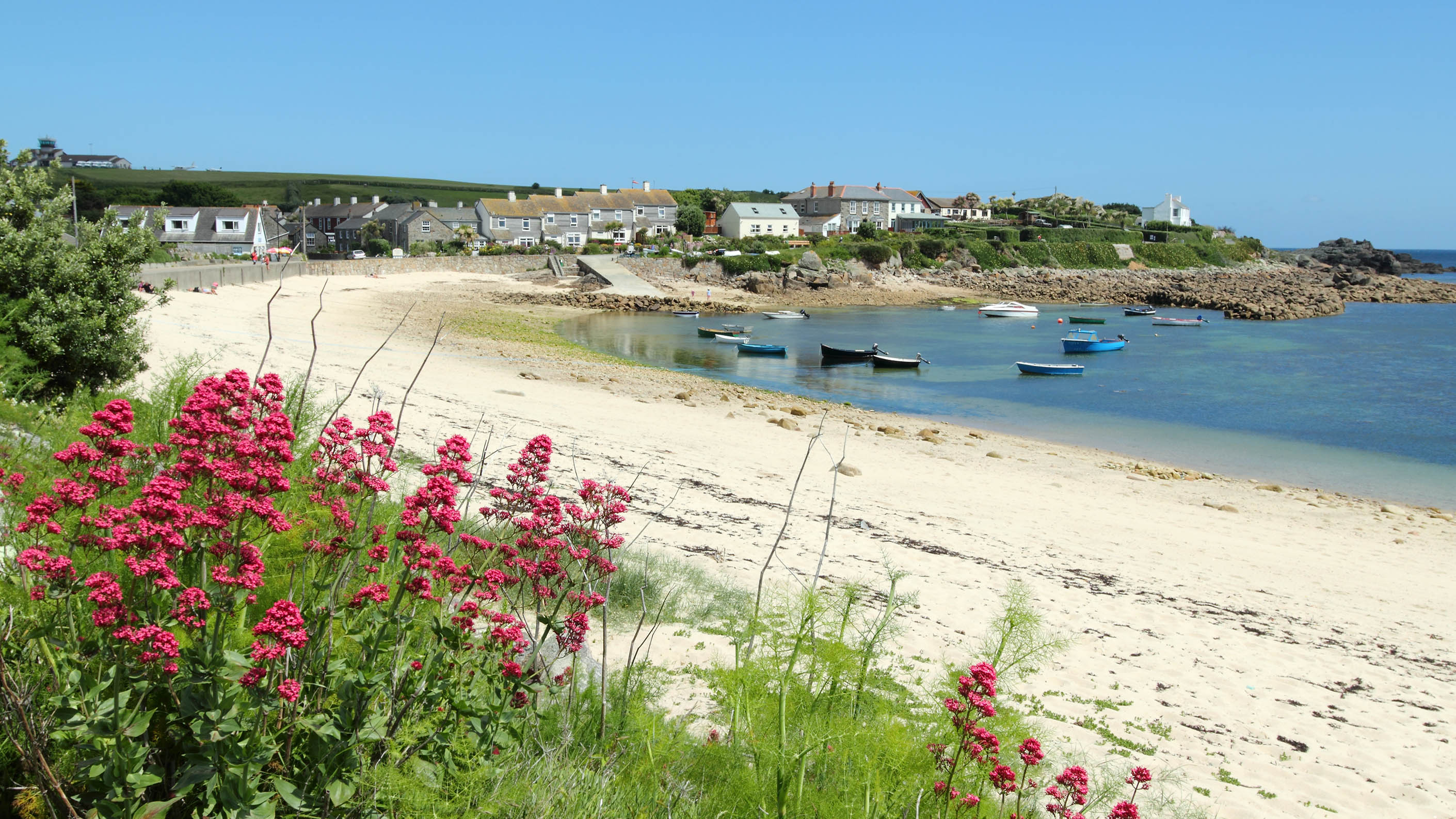
If you’re lucky enough to live by the sea there are several things to consider before you get to work on your dream seaside garden— and choosing the right plants is one of them. Not all of our favorite leafy friends can thrive in coastal conditions, so you’ve got to be careful in planting the best flora possible to ensure they stand the test of time.
One of the most significant challenges of growing plants by the sea is salt exposure. Salt-laden sea air can damage and desiccate plants. Stronger winds are also often associated with coastal gardens, which can be quite damaging to those plants that aren’t hardy enough to withstand it. Soil in these areas is another thing to be mindful of as it can be particularly free-draining and sandy. Still, there’s plenty of opportunity to grow some striking plants - be it trees, shrubs or flowers - by the sea and create a rich and biodiverse garden.
Fiona Jenkins, a gardening expert from trades matching site MyJobQuote.co.uk, gives us the low down on the best plants for growing — and flourishing — by the sea.
1. Acer Pseudoplatanus

A seaside garden will need a wind break to protect it against the strong coastal winds and that is where acer pseudoplatanus comes in. This UK native tree is commonly known as a sycamore. It’s fast-growing and will withstand most situations including full exposure to sea winds.
“This tree rates as a H7 on the Royal Horticultural Society’s hardiness scale of trees, which represents the coldest parts of the UK and means only extremely hardy plants will survive,” explains Jenkins. “This is what makes acer pseudoplatanus suitable for gardens which are exposed to strong winds, storms and salty air.”
As the acer pseudoplatanus survives in places that other trees may not tolerate it’s also a great choice for providing shelter and nesting for wildlife and birds along the coast.
2. Ginkgo Biloba

Another stunning tree for gardens close to the sea is the ginkgo biloba. This large deciduous tree likes well-drained soil and full sun. It’s also low maintenance, requires no pruning and is generally pest-free.
“With its distinctive fan-shaped and leathery leaves the ginkgo biloba tree is equipped to deal with the extreme conditions on the coast,” explains Jenkins. “It will also add some beautiful autumnal colour to your garden.”
Expect this tree to grow up to a height of 12 meters (39 feet) with a spread of 4-8 meters, offering decent shelter from strong coastal winds and salty air.
3. Pittosporum Tobira

Once you have the trees to provide some shelter from the wind you can think about adding some robust shrubs to your seaside garden. Pittosporum tobira — otherwise known as Japanese mock orange — is an evergreen shrub that will grow to a height of 2 to 4 meters (6.5 to 13 feet) with a spread of 1.5 to 2.5 meters.
“Pittosporum tobira’s deep-green leathery leaves are a beautiful contrast to the off-white flowers that bloom on the bush in late spring,” says Jenkins. “These five-petalled flowers have a wonderful honey fragrance and develop into round fruits containing numerous orange seeds."
Preferring a south or west-facing aspect, this plant is adaptable to most soils including loam, sand or clay but the ground must be well-drained.
“As long as you site your pittosporum tobira in full sun or dappled shade it will do well in your seafront garden and is a relatively low-maintenance plant,” Jenkins adds.
4. Hordeum Jubatum
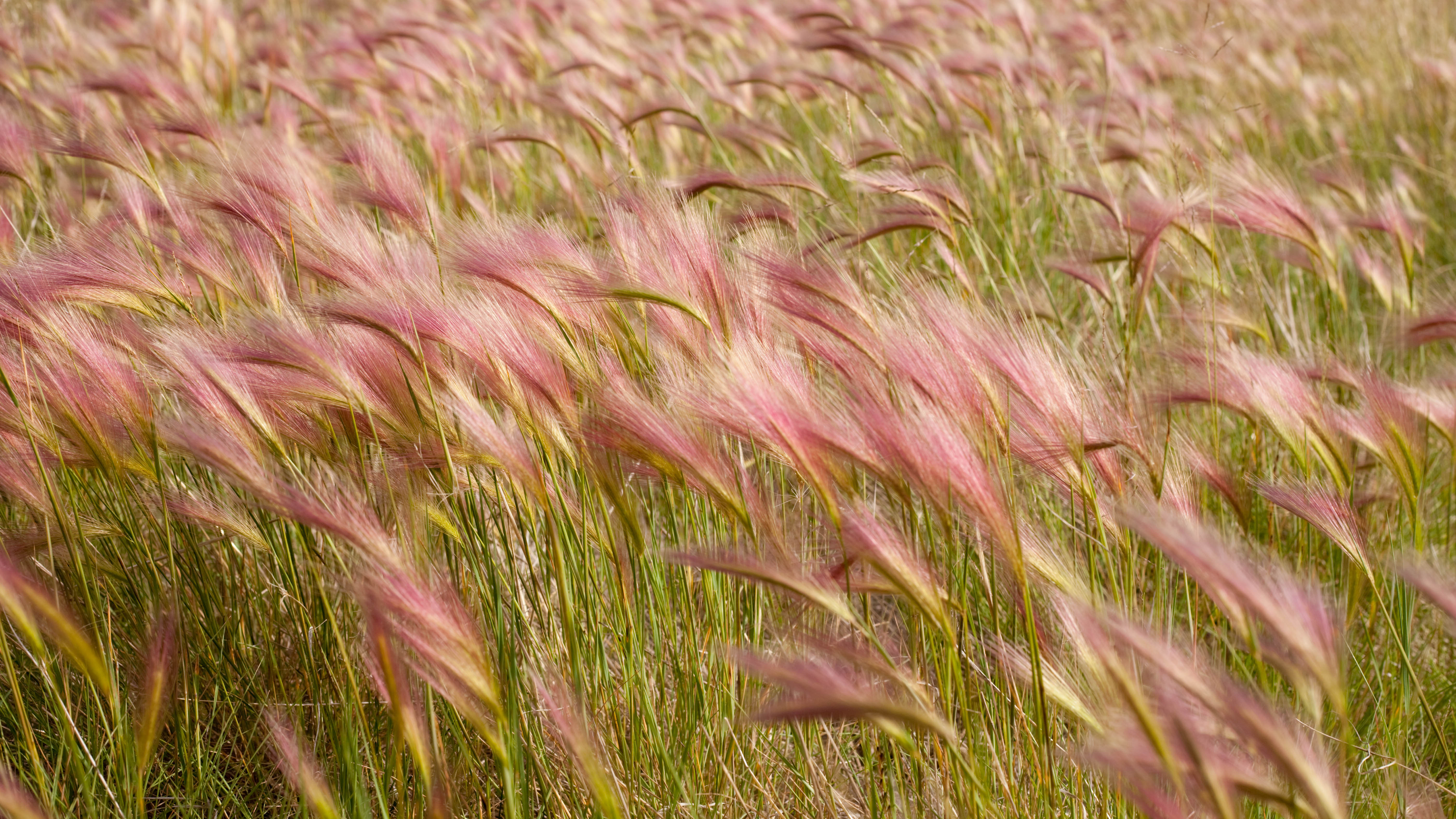
No garden by the sea would be complete without some ornamental grass and hordeum jubatum or “foxtail barley” is a good addition as its silky foliage glistens as it moves under the sea breeze. In early summer hordeum jubatum often has hints of red at its tips adding an attractive splash of colour animated by the sea winds.
“This is a very easy plant to grow, and it can reach a meter in height in just two years,” explains Jenkins. “It likes full sun and a southerly or westerly aspect and will do well in either an exposed or sheltered position making it versatile as an ornamental addition to your garden.”
As with most seafront plants, hordeum jubatum is hardy enough to tolerate most soils such as loam, sand, chalk and clay as long as it is well-drained.
5. Sea campion
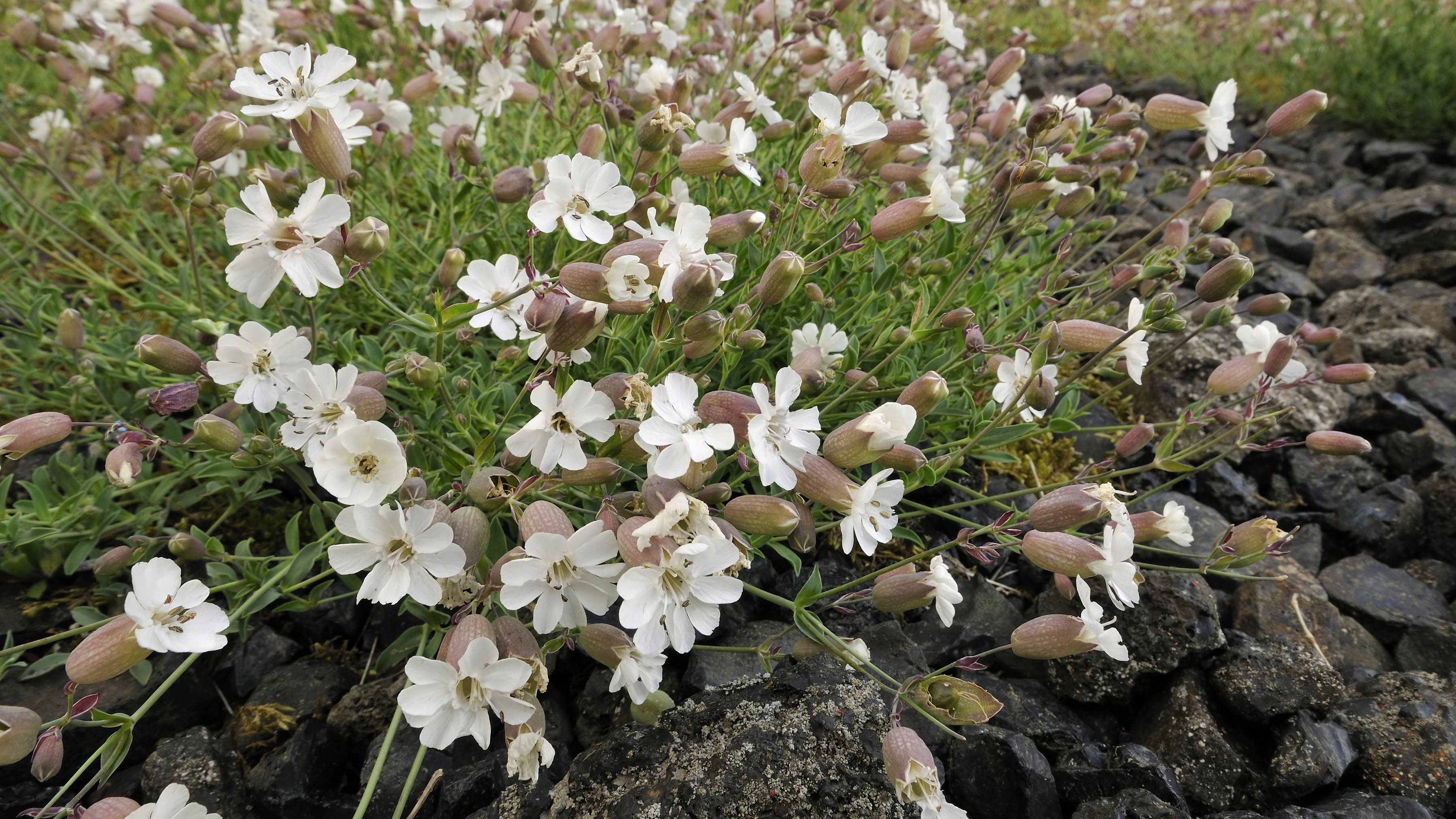
This coastal native plant is a low-lying semi-evergreen perennial forming mats of foliage and delicate white flowers. It has an abundance of uses including in rock gardens, banks, wall-side borders and crevices. Despite its fragile appearance, sea campion is one of the toughest plants to include in your seaside garden.
“As it’s a low plant reaching just 15cm in height, it’s able to withstand the strong winds experienced by most coastal gardens,” says Jenkins. “It’s also quite low-maintenance and generally disease and pest-free.”
When planting, be aware that the sea campion prefers a full sun position and a southerly aspect — although it will do well in both exposed and sheltered locations.
6. Eryngiums

Eryngiums are very happy in coastal gardens. Boasting cone-shaped flowers surrounded by spiny bracts, it’s no surprise this plant is nicknamed sea holly. However, despite its fearsome appearance, eryngium does need some protection in the colder months and doesn’t enjoy soil that gets too wet. This is why it’ll require locations with full sun exposure.
“These flowers will grow to a height of 50cm making a dramatic, sculptural statement in your seaside garden,” says Jenkins. “Even when finished flowering their seed pods make an attractive display. For this reason, they are typically left in place over the winter although you can deadhead if you prefer.”
Do this with the best pruning shears, while wearing the best gardening gloves.
7. Kniphofias

Also known as red hot pokers, kniphofias provide a warming splash of colour to an often grey coastal scene with varieties such as Flaming Torch and Red Rocket. Expect them to grow to a height of between 1-1.5 meters (up to 5 feet) over 2 to 5 years.
“These stately flowers have an almost bottle-brush appearance, and the leaves are long and grass-like,” explains Jenkins. “And since there are many different varieties, it’s a good idea to research which will do well in your soil type and location. While many are red and orange you can also find yellow and even lime green kniphofias.”
Plant them in sandy or clay soil which should be moist but well-drained and make sure they’re positioned in full sun. A sheltered south or west-facing aspect will suit best.
8. Agapanthus
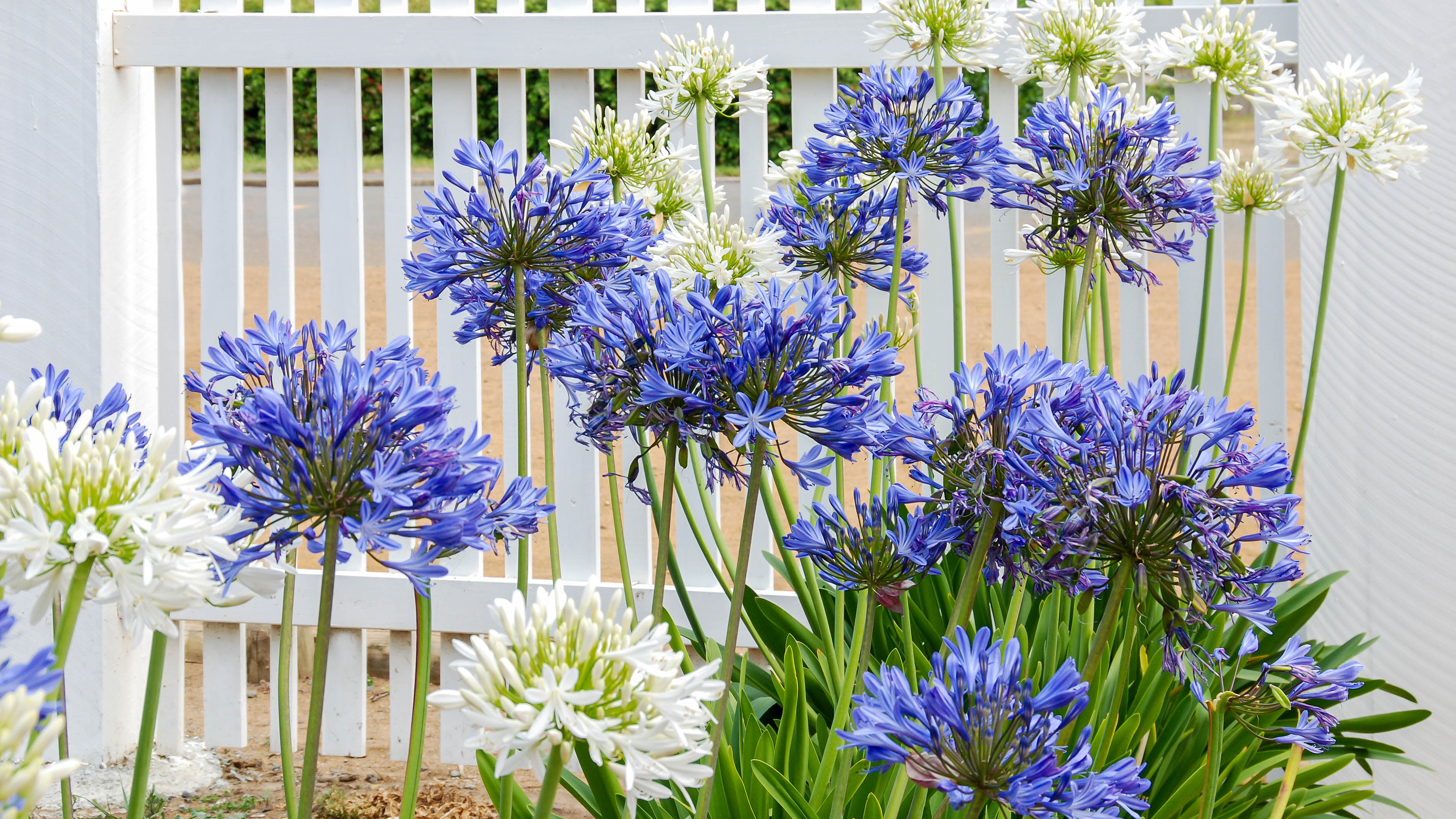
Otherwise known as African lily, the agapanthus plant is best grown in cold areas as it can tolerate temperatures between -5 and -10°C or 14 to 23°F. Available in different varieties of blue and white, it can grow to a height of up to 1 meter, with large flower heads that will make a statement in any seaside garden.
“For maximum benefit to your agapanthus plant them in a position where they will be in full sun and sheltered from the damaging coastal winds,” advises Jenkins. “They will enjoy an east, west or south facing aspect and when flowering has finished the seed heads make an attractive display in their own right.”
9. Red Valerian
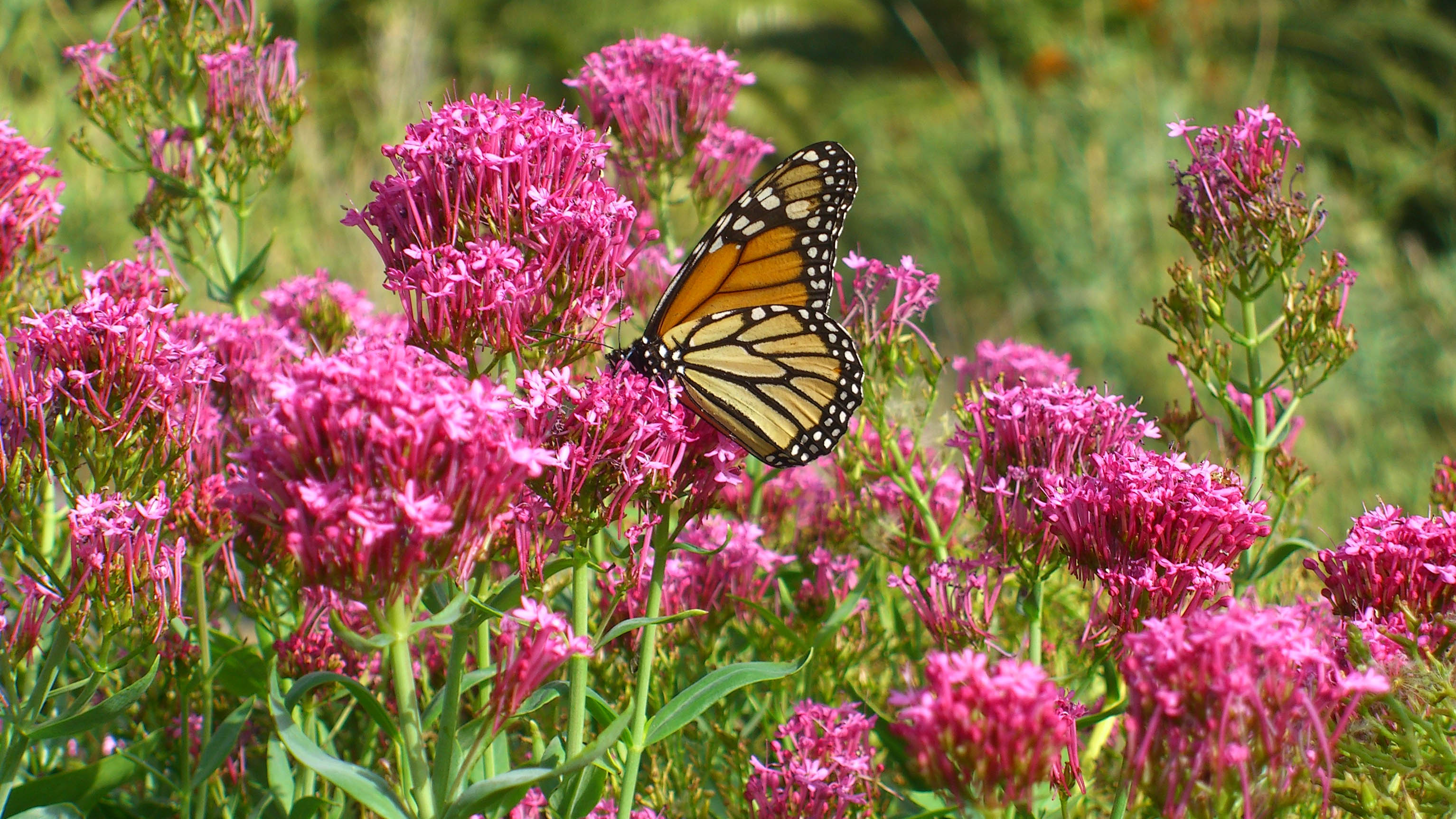
Commonly known as red valerian, centranthus ruber thrives in coastal areas. It’s a herbaceous perennial with clusters of small trumpet-shaped flowers in pink, crimson or white.
"Many people consider red valerian a pest as it has a tendency to self-seed, but it looks wonderful alongside sea holly in your coastal garden," says Jenkins. "It does well in seafront gardens as it is drought resistant, will thrive in poor to moderate soil and is generally disease and pest-free.
This semi-evergreen plant will grow to a height of 0.5-1 meter over 2 to 5 years in sandy, clay or loam soil.







